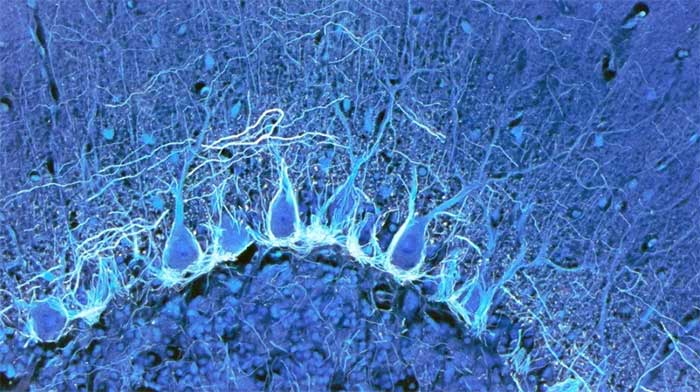Scientists Reveal the Most Detailed Human Brain Map, Uncovering the Arrangement and Function of 3,300 Types of Brain Cells.
A new study on the human brain cell map was published on October 12, consisting of 21 research papers in three journals: Science, Science Advances, and Science Translational Medicine. “It’s not just a collection of maps but actually opens up an entirely new field where you can observe the brains of various species with extremely high cellular resolution, which was often not feasible before,” said Ed Lein, a neuroscientist at the Allen Institute for Brain Science and the lead author of five of the papers.

Purkinje cells, large neurons in the cerebellum, located at the back and bottom of the brain. (Photo: Steve Gschmeissner/Science Photo Library).
The new research is part of a major project initiated by the National Institutes of Health (NIH) in the United States. The project began in 2017 with the aim of cataloging the cells in the brains of mice, humans, and non-human primates.
The mapped cells include neurons—brain cells that communicate through electrical and chemical signals—and an equivalent number of other cells. The adult human brain contains approximately 86 billion neurons, give or take 8 billion, along with around 84 billion other cells.
The team of scientists utilized transcription techniques and a comprehensive cataloging of RNA in each cell. RNA is a genetic molecule that contains instructions for producing proteins and performing several other important functions. They also employed epigenetic techniques to examine chemical signals that lie above DNA and control how genes are utilized. The individual studies included data from hundreds of thousands to millions of brain cells.
By combining these techniques, the research group created a cellular map of both developing and adult human brains, as well as the brains of several primate groups, such as squirrel monkeys (Callithrix) and macaques (Macaca). This enabled them to directly compare human brains with primate brains, revealing that many types of cells found in the human brain are also present in chimpanzees and gorillas. However, despite sharing the same types of cells, the gene activity of these cells in humans and primates differs significantly, leading to variations in cellular coordination.
Although the level of detail is unprecedented, the new human brain map is merely the initial draft from the research team. Moving forward, they aim to decipher the functions of the newly discovered cells in the brain, a significant number of which are located deep within the brain in structures such as the brainstem. They also seek to understand how the gene activity of different cells contributes to the development of neurological diseases.



















































